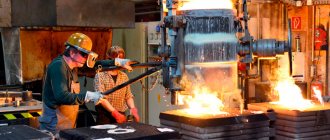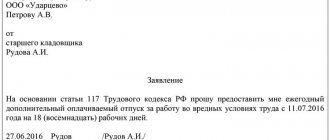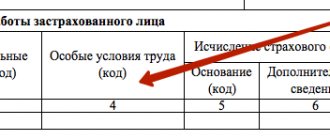Occupational safety is protected by law; managers of any enterprise, company, or organization must provide their staff with working conditions taking into account acceptable indicators of harmfulness and danger.
The working process conditions are regulated both by the Labor Code and other legislative acts, several federal laws. If harmful conditions do not correspond to the maximum permissible hazard indicators, workers are provided with personal protective equipment and other means that protect against exposure to hazardous substances.
If the boundary indicators of harmfulness are violated at the enterprise, a study of working conditions is carried out, the management will be punished through administrative measures, and in exceptional cases, criminal liability. To control labor safety, a classification of working conditions is provided according to various indicators, including the degree of danger.
Not only managers, but also employees of the labor protection department (if such a department has been created at the enterprise) must be familiar with the issues of classification and protection of working conditions.
How to determine the class of working conditions, what does the classification affect, when do the provisions apply? Information is also important for the workers themselves, because it is in the interests of their work. achieve normal, safe conditions for
Assessment procedure
From the very beginning of the work of any enterprise or company, the issue of ensuring comfortable working conditions for the entire team must be resolved.
But in some cases, a special commission is created that determines the degree of harmfulness in a particular workplace. The commission checks the conditions according to several indicators, determines how the acceptable indicators of harmfulness relate to the real ones established during the inspection.
It is determined based on comparison how significant the deviations are and how harmful and dangerous the conditions are. The work of the commission makes it possible to determine which hazard class these working conditions belong to. Based on the results of the conclusion, workers are given personal protective equipment or other decisions are made.
Compensation for employees of dangerous and harmful production areas
The current norms of labor legislation regulate the provision of an increased salary in the event of carrying out production activities with dangerous and (or) harmful working conditions (clause 1 of Article 146 and clause 1 of Article 147).
Employees of enterprises retain the right to additional payment to their salary if it was determined based on the results of workplace certification completed no later than 01/01/2014. Changing the amount of compensation or canceling it is possible only after the employer organizes an SOUT.
Based on clause 2 of Article 147 of the Labor Code of the Russian Federation, the minimum increase in wages for work in unfavorable conditions is 4% of the tariff rate in force for production activities with normal working conditions. An increased amount of payments, approved by the representative body of workers, can be specified in a collective agreement or a local act of the enterprise. It is most advisable to increase payment for work in special conditions through compensatory additional payments, since when determining the increased amount of the main part of the salary, it is difficult to isolate its component in the form of compensation. Reducing or eliminating compensation requires adjusting the terms of the employment agreement. It is carried out by agreement of the parties or in a special manner related to changes in the technological and organizational conditions of labor activity.
What parameters apply
During the work of the commission, attention is paid to several factors of the production environment affecting the employee of the enterprise.
ATTENTION! The parameters by which working conditions are classified are determined by GOST 12.0.002.-80.
Various factors affecting the human body are selected.
Physical factors include:
- The amount of dust in the air at the workplace.
- Noise level.
- Vibration level.
- Temperature.
- Humidity.
- Lighting.
- Electromagnetic radiation.
- Air speed.
Biological factors influencing working conditions - what does this mean?
- These include the presence of microorganisms.
- Presence of disputes.
- The presence of an infection in the workplace that causes dangerous diseases.
Chemical factors:
- This means working with alkali.
- Working with acids.
- Working with paints and varnishes.
- Presence of hazardous chemicals in the air.
When determining the working conditions by which they are assigned to certain classes, a special assessment takes into account such parameters as the intensity of work and the optimal dynamic loads on a person when performing it.
- When studying dynamic loads, the following nuances are studied:
- How much weight does the worker need to lift?
- How actively and often does he need to move.
- Do I need to bend over while working, how often, do I need to turn around.
- Another important point is what position the body maintains when performing production tasks.
Regarding labor intensity, working conditions are characterized by the following parameters:
- What emotional and mental stress does an employee experience during the working day?
- How similar are his movements throughout the day?
If the acceptable level of safety is violated, the worker is exposed to certain harmful factors. His physical and moral well-being and health deteriorate, and his performance decreases.
ATTENTION! Constantly remaining dangerous working conditions lead to occupational diseases, which, unfortunately, is quite common.
Acceptable
Article 14 of Federal Law No. 426 defines acceptable working conditions (2nd class) as those that do not exceed the level of sanitary and hygienic indicators for equipped workplaces in the production process. Possible deviations in the employee’s health status are eliminated during the rest period or before the start of the next working period. Such UTs do not have a detrimental effect on the employee’s health and do not pose a danger. Considered safe according to professional standards.
Division into classes
Classification is carried out taking into account Article 14 of the Federal Law of the Russian Federation No. 426.
There are 4 classes:
- Optimal.
- Acceptable.
- Harmful.
- Dangerous.
Only the first two classes can be considered safe; the rest require the adoption of effective protective measures for the health of workers.
I class
In this case, physical, chemical, biological factors are within normal limits, and the load on the worker’s body is also characterized. A person feels comfortable in the workplace throughout the working day.
He can fully concentrate on completing the tasks assigned to him, nothing irritates him, and his performance does not decrease. Who usually has optimal working conditions?
- These are office employees.
- Banking institutions.
- Trading companies.
But even in such places, working conditions should rather be characterized as acceptable rather than optimal. After all, most often, while fulfilling his job duties, an employee still gets tired by the end of the working day. Fatigue is often influenced by the atmosphere in the team and the attitude of management.
II class
Safety class II implies the presence of minor harmful factors, the level of which does not exceed those permitted by regulatory documents . And even if the employee is tired, during the rest period prescribed by the Labor Code, he easily regains his strength. Harmful factors under acceptable working conditions do not harm health or lead to occupational diseases.
III class
At the legislative level, certain standards of working conditions are established. If they are violated, an unfavorable environment for the employee is created. Harmful factors in working conditions lead to a deterioration in physical and moral well-being and the emergence of occupational diseases. The type of harmful factors largely depends on the profession and occupation.
This is a large class of working conditions; for convenience and for a more precise definition, it is further divided into several important groups, into subclasses:
- Subclass 3.1 – what is it characterized by. This class includes hazardous conditions of the 1st degree. Under such working conditions, a standard lunch break is not enough for a person to restore strength and performance. Fatigue gradually accumulates and becomes the basis for the occurrence of industrial diseases.
- Subclass 3.2 . harmful factors have a stronger influence and lead to irreversible consequences in the body. The ability to work is still preserved even in the presence of an occupational disease. The presence of hazard class 3 may be a temporary phenomenon for working conditions; they can either improve or worsen over time.
- Subclass 3.3 An occupational disease develops and enters the phase when the employee can no longer perform his duties efficiently. The disease becomes chronic.
- Subclass 3.4 . Occupational diseases that appear due to harmful working conditions do not just develop into a chronic stage - they can lead to complete loss of ability to work and even disability.
IV class
Such conditions are rare; they are mainly recorded in those enterprises where workers have to come into contact with harmful substances and radiation.
IMPORTANT! If working conditions of IV degree of danger are identified, measures must be taken to eliminate them.
If the harmfulness cannot be completely eliminated for reasons related to technology and materials, it should at least be effectively reduced .
According to the law, workers at such dangerous enterprises must receive additional payments and compensation for damage to health.
Harmful or dangerous working conditions: tax aspects
Methodological materials for taxpayers
HARMFUL OR DANGEROUS WORKING CONDITIONS: TAX ASPECTS
It would seem that harmful or dangerous working conditions are characteristic only of manufacturing enterprises. However, work related to computer technology is also harmful. And today in any company, the majority of employees work on a computer. What privileges and compensation are they entitled to? How are taxes calculated?
Classification of working conditions
Working conditions are a combination of factors of the labor process and the production environment (Part 2 of Article 209 of the Labor Code of the Russian Federation). The definition of these concepts is contained in the Guidelines for the hygienic assessment of factors in the working environment and the labor process, approved by the Chief State Sanitary Doctor of the Russian Federation on July 29, 2005 (hereinafter referred to as Guidelines No. R 2.2.2006-05). Factors in the labor process include the severity of labor (high load on the musculoskeletal system and functional systems of the body) and labor intensity (predominant load on the central nervous system, sensory organs and emotional sphere of the worker). The severity of labor is characterized by physical dynamic load, the mass of the load being lifted and moved, the total number of stereotypical working movements, the magnitude of the static load, the nature of the working posture, the depth and frequency of body tilt, and movements in space. Factors characterizing labor intensity include intellectual, sensory, emotional stress, the degree of monotony of workload, and work mode.











